APRIL 19, 1995: A DAY DRAG RACING SHOULD NEVER FORGET
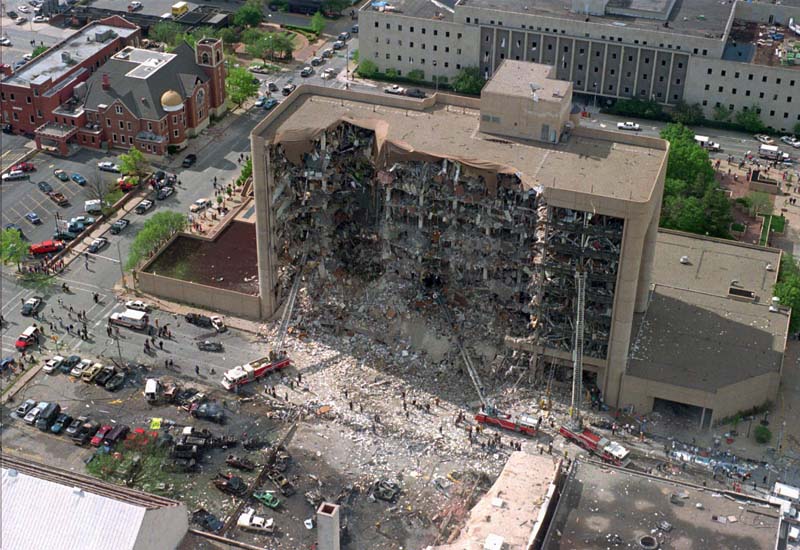
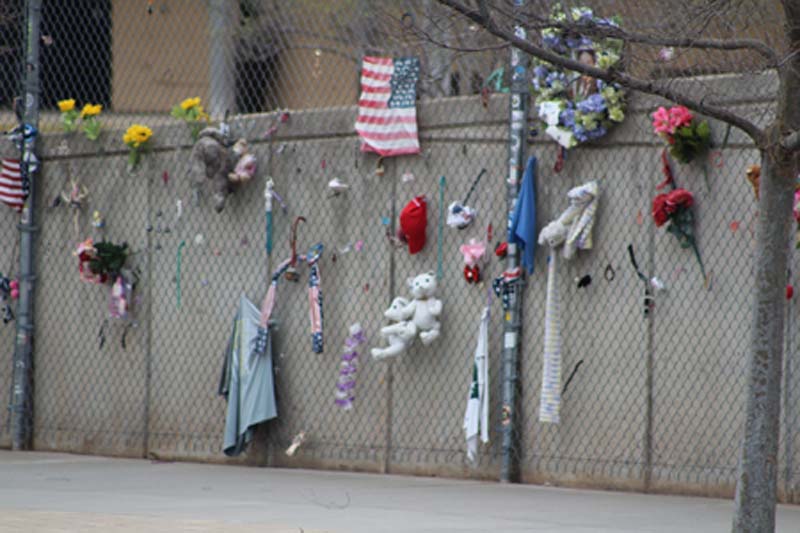
With the lighting of a two-minute fuse, Timothy McVeigh set in motion an explosion that sheared the face of the Alfred P. Murrah Federal Building in Oklahoma City. The bombing killed 168 people, caused $652 million in damage, and could be heard and felt up to 55 miles away.
Sunday, April 19, 2020, marks the 25th anniversary of the bombing, which left a scar on America’s Heartland that will never vanish. At the time, it was the deadliest episode of terrorism ever to occur in the continental United States.
Thirteen months after the explosion, the city razed the shattered shell of the Murrah Building. The area adjacent to the site is now the home of the Oklahoma City National Memorial & Museum, and where the Murrah Building once stood are symbolic elements such as the Field of Empty Chairs, the Survivor Tree, Survivor Wall, and a reflecting pool.
McVeigh was convicted of multiple crimes in 1997 and executed four years later. A co-conspirator, Terry Nichols, also was convicted and is serving life in a federal supermax prison. A third person tied to the plot, Michael Fortier, spent more than 10 years behind bars and was released in 2006.
Regrettably, and inadvertently, the sport of drag racing was part of the flash of horror at 9:02 a.m. that Wednesday morning in 1995.
McVeigh and Nichols’ heinous creation was made especially destructive thanks to the use of nitromethane, the fuel that powers drag racing’s premier Top Fuel and Funny Car entries. The inclusion of “nitro” as a terrorist weapon could have had devastating consequences to the sport, and, taken to an extreme, could have meant the end of those classes.
In late 2001, as two-time Funny Car champion Cruz Pedregon remembers, NHRA called a meeting of racers whose cars were powered by nitromethane. The four hijacked passenger jets that were crashed on Sept. 11, ‘01, had nothing to do with drag racing, but terrorist activities had stirred memories of Okahoma City and the use of nitromethane in bomb-making.
RELATED LINK - WITNESSES DESCRIBE MCVEIGH'S EFFORTS TO OBTAIN BOMB COMPONENTS, INSTRUCTIONS
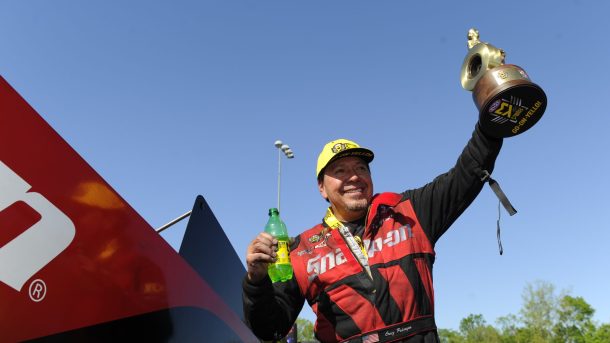 Pedregon said that he and many others left that session shaken by what was at stake.
Pedregon said that he and many others left that session shaken by what was at stake.
“We’re walking out of there thinking, ‘Oh, man, we’d better hope nobody does anything wrong with nitro because they could threaten to shut us down,’ ” Pedregon, an owner-driver, said in an interview last week. “‘If they do, we’ll all be racing a different kind of car, that’s for sure, because nitro is the key ingredient.’ ”
Changes in nitromethane’s sale, possession and transport have helped it remain the primary fuel for mind-boggling racing performance. The sport of drag racing simply wouldn’t be the same without nitro.
To illustrate the type of horsepower nitromethane produces, the overall NHRA record speed belongs to the Funny Car division at 339.87 mph. That’s a number unleashed by driver Robert Hight in 2017 at Sonoma, Calif., over the current 1,000-foot distance.
In comparison, the fastest non-nitro class is Top Alcohol Dragster, where the record is 285.83, and that’s over a distance of 1,320 feet. That’s a 54-mph speed gap, much of which is directly the result of nitromethane being consumed in an engine’s eight cylinders.
The bomb built by McVeigh and Nichols had multiple deadly ingredients. In addition to nitromethane, the weapon included ammonium nitrate (a high-nitrogen fertilizer), diesel fuel, and a substance called Tovex that has all but replaced dynamite. Nitro amplified the concussive, explosive force of the bomb, which is why McVeigh and one other associate sought to purchase it at NHRA-sanctioned national events.
Nitromethane isn’t as flammable as many other fuels until it’s subjected to the right conditions. Dale Armstrong, whose tuning expertise propelled Kenny Bernstein to the first 300-mph run in 1992, once explained its properties this way: “If you poured a puddle of nitro on the pavement and threw a match on it, it would drown the match. But you hit that puddle with a big mallet and you’ll get an explosion.”
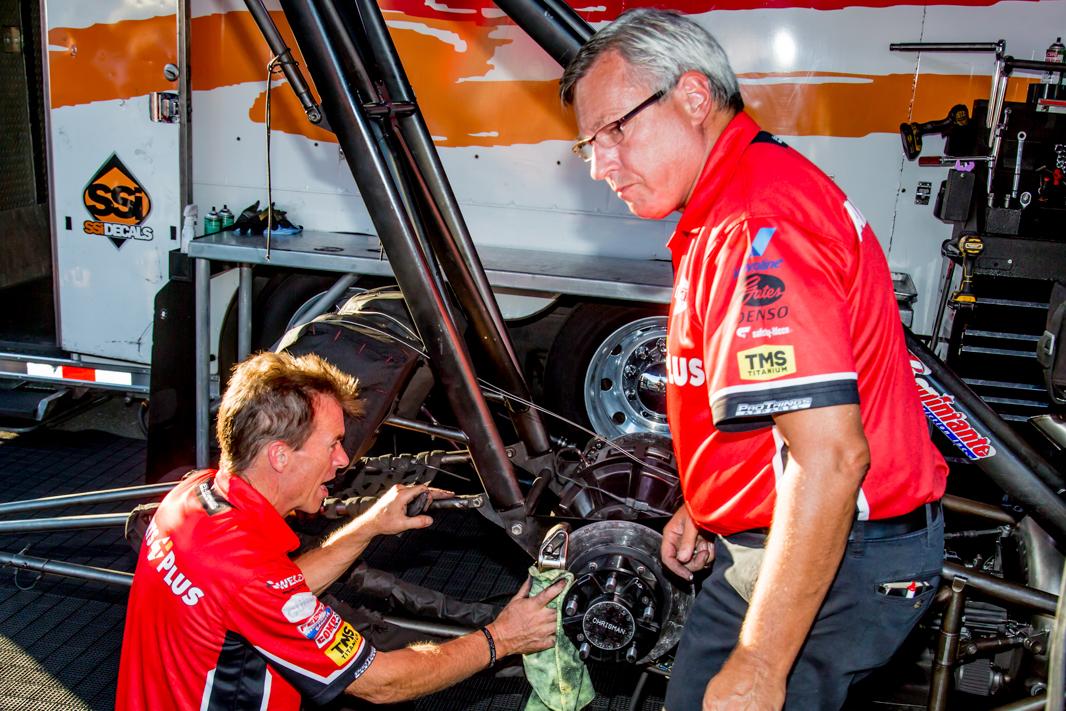 “Nitromethane is incredibly powerful, so it’s not a surprise to me that you could park a truck that far away from a building and blow the front of it off, detonating that much nitromethane all at once,” said Mike Kloeber, the crew chief behind Clay Millican’s consecutive IHRA Top Fuel titles from 2001-06.
“Nitromethane is incredibly powerful, so it’s not a surprise to me that you could park a truck that far away from a building and blow the front of it off, detonating that much nitromethane all at once,” said Mike Kloeber, the crew chief behind Clay Millican’s consecutive IHRA Top Fuel titles from 2001-06.
The blast produced by the Oklahoma City explosion was the equivalent of 5,000 pounds of TNT. In drag racing terms, Kloeber said it would be comparable to “two modern-day cars racing five times at national record-level performance and you add that power together. That’s the kind of energy you would release over half a second. Not a surprise that nitromethane did that.”
How did McVeigh get his hands on nitromethane? Simple: He went shopping for it at a place where large quantities were for sale.
McVeigh and at least one other man visited two NHRA national meets in attempts to acquire drums of nitro. The first instance came at the NHRA’s event at Heartland Park Topeka (Kan.), but the would-be buyer left without obtaining any. McVeigh, according to testimony in the 1997 trial of Nichols, then purchased three 55-gallon barrels of the fuel for $2,775 a few weeks later at NHRA race at the Texas Motorplex outside Dallas.
Twenty-five years later, the memories of encountering those men are still fresh in the memory of Steve Lesueur, a fuel supplier in Virginia who “grew up in this business.” His father, Frank, spent much of the 1970s as a booking agent for Funny Car racers looking for match-race dates along the East Coast, and the need to provide them with nitromethane helped launch World Wide Racing Fuels.
“There was no good source of nitro for all these traveling, gypsy racers,” Steve Lesueur said. “There were a lot of cars. They didn’t burn (nitro) up like they do now, but there were a whole lot more of them.”
That endeavor was key in the creation of World Wide Racing Fuels, which from 1977 through 2004 was a nitro supplier to NHRA. Lesueur now operates as Fast Fuels in New Canton, Va.
Fuel suppliers at Heartland Park Topeka from Sept. 30-Oct. 3, 1994, were VP Racing Fuels, World Wide, and Indiana’s Larry Coogle, a former Funny Car competitor. At that time, there were no restrictions on who could purchase nitromethane, it was simply a product for sale on the open market -- no different than a can of soda or pack of crackers despite its explosive potential.
Lesueur was at his own truck when he was approached by a “young man in fatigues.” He said the man sought to buy a drum of nitromethane and another of hydrazine, which is a type of rocket fuel that was commonly mixed with nitro by drag racers in the late 1960s and very early 70s. Hydrazine fell out of favor with racers because of its highly destructive properties that led to extreme parts damage and injuries.
NHRA “didn’t have to outlaw it,” Lesueur said, “because the racers kind of went, ‘Enough of that.’ ”
Glynn Tipton worked for one of the other fuel suppliers at Topeka. Testifying at McVeigh’s June 1997 trial in Denver, Tipton said that he was approached by “a tall, slender man with scruffy whiskers.” He testified that the stranger got his attention by calling out to him, “Hey, boss.”
“I asked the guy if I could help him,” Tipton said in sworn testimony. “He asked if I could get anhydrous hydrazine in 55-gallon drums.”
Tipton testified he told the man he didn’t know because hydrazine wasn’t a fuel carried to the drag races. Giving the man -- who identified himself as “John” -- his business card, Tipton said he would get an answer and for the man to call him. Tipton said they spoke on the phone a few days later, but that no sale of any fuel was made.
RELATED LINK - CLICK HERE FOR TRIAL TESTIMONY TRANSCRIPT
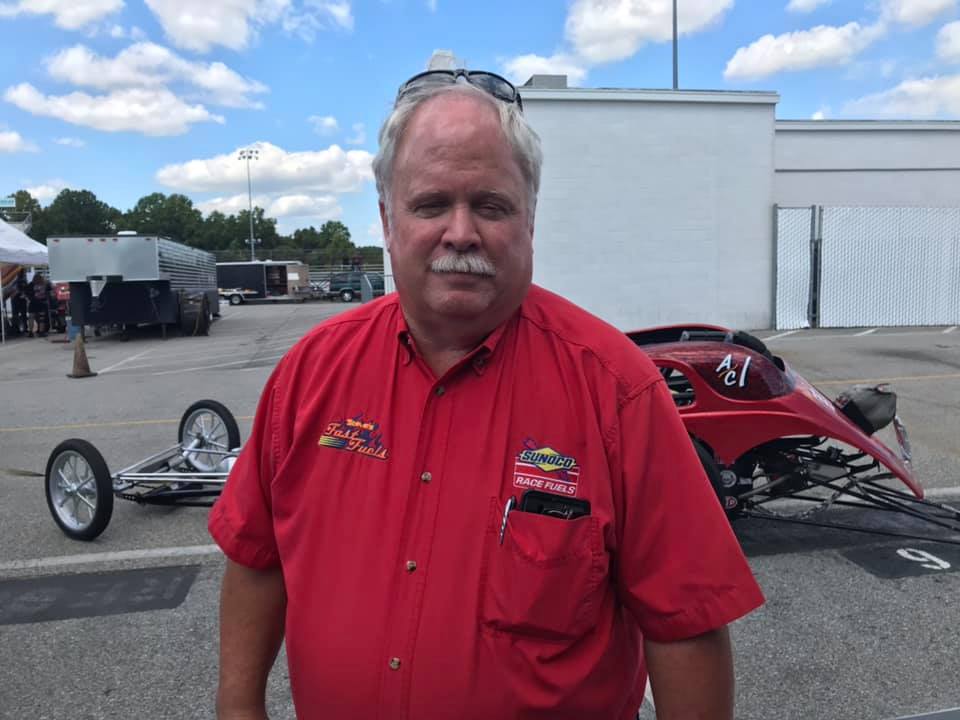 When the same man queried Lesueur about purchasing nitromethane and hydrazine, it raised the salesman’s curiosity: “I said, ‘Son, what are you fixing to make fuel for?’
When the same man queried Lesueur about purchasing nitromethane and hydrazine, it raised the salesman’s curiosity: “I said, ‘Son, what are you fixing to make fuel for?’
“He said, ‘Well, go-karts.’ ”
“I said, ‘Whatever science book you’ve gotten yourself into, you need to get back out of it because that’s not going to work.’ That’s when my conversation ended with him -- because I had laughed at his question” Lesueur said in an interview last week.
He said the man, whom he stated was not McVeigh, walked away. Lesueur added that internet reports that he called the FBI “immediately” after that conversation are inaccurate and that he never initiated any contact with the agency.
After the Topeka race, Lesueur headed home to Virginia to reload his tractor-trailer with fuels needed to finish out the season. The NHRA tour was next headed to the Texas Motorplex before it made the trek to southern California to complete the season.
Three weeks after the Topeka race, as he approached the Motorplex, Lesueur misjudged a turn onto a road into the facility and said he “tipped the back end of my truck over into a ditch. You couldn’t get into it -- couldn’t get the doors open.”
And it was while stuck in that predicament that Lesueur said he was approached by a man who “wasn’t the same guy” that had spoken to him in Topeka.
“This guy comes up and starts pestering me about buying two drums of nitromethane,” Lesueur said. “We’re all money hungry in this life. That was my job for years and years and years, to sell as much nitromethane as I could sell. He claimed to be part of … an independent Harley-Davidson (racing) team. I didn’t know all of those guys like I knew all the Top Fuel and Funny Car guys, so that didn’t immediately turn me as to a ‘Who are you?’ kind of thing.”
With Lesueur unable to access his products until the rig was extracted from the ditch, the man turned to one of the other fuel dealers that was already open for business.
Tim Chambers was manning another dealer’s station at the Texas Motorplex that day, Oct. 21, 1994. He testified at Nichols’ 1997 trial that a man, whom he identified as McVeigh, approached him about buying three drums of nitromethane, not two.
Chambers testified that McVeigh paid a co-worker, Brad Horton, $2,775 in cash for three drums of nitromethane and a used siphon. Horton, now a regional sales manager for the company, was asked Wednesday if he would be willing to describe his brief interaction with McVeigh. He declined, saying, “That’s not something I care to comment on.”
Chambers then stated in court that he gave McVeigh a pass so he could bring a pickup into the pit area to retrieve the barrels of nitromethane. Chambers said he loaded the drums into the pickup, whose bed was covered with a white camper shell.
TRANSCRIPT OF TIMOTHY (TIM) CHAMBERS' TESTIMONY AT TERRY NICHOLS' TRIAL

That was the end of the story -- until the Murrah Building was demolished six months later. In addition to the death and destruction, more than 500 people were injured by the blast’s effects.
Analysis of the debris proved the presence of nitromethane in the bomb. A search of McVeigh’s residence after the explosion uncovered a ticket to the race at Topeka, and, according to Chambers’ testimony in court, the sales paperwork showed the purchase of the nitromethane and siphon at the Motorplex.
Eventually, Lesueur got a visit at his business from the Federal Bureau of Investigation.
“It was my local FBI agent, who was familiar with me. … There had been times for him to come and bring pictures and say, ‘Have you seen this guy?’ or ‘Have you seen this guy?” Lesueur said. “Well, this time he walked in the shop, looked at my secretaries and told them they needed to take a break, and he closed my office door. And he said, ‘This is more serious than anything I’ve ever come down here for.’ And we discussed it -- but it never went any farther than that.”
Lesueur said it wasn’t until NBC News showed up at the 1996 NHRA race at Sonoma, Calif., that those involved in the sport realized nitromethane purchased in Texas was part of the Oklahoma City bombing.
“Between the time that the purchase was made and the bombing, none of us put anything together,” Lesueur. “Now, after the bombing, because (McVeigh) had nitromethane and the analyzation of the explosion showed that, that’s when they started asking questions.”
The use of nitromethane isn’t limited to professional drag racing. It’s sold in small quantities -- usually a gallon -- to model airplane enthusiasts and radio control-scale drag racers. Its primary use is in industrial applications and as a cleaning solvent, but it is also utilized in the making of pharmaceuticals, pesticides, fibers and coatings.
Drag racing endured the scrutiny of the federal government again following the events of Sept. 11, 2001, when jets, rather than bombs, were used by terrorists as weapons of destruction. Even though nitromethane had no role in the events of the day, it put law enforcement agencies around the country on edge.
Kloeber said he remembers hearing from the FBI at one point, and said he realized immediately that the caller wasn’t a prankster.
“If I remember right, the FBI guy woke me up, called early in the morning when I was sleeping in,” said Kloeber, who tuned driver Jim Epler to the first 300-mph Funny Car run at the 1993 Topeka race. “I talked to him, then went and made coffee, then called Clay: ‘Hey, did the FBI call you?’
“It sounded like two different guys talked to us. There wasn’t much of an opportunity for Clay and I to exchange notes, and they would’ve gotten the same story from both of us anyway,” Kloeber said. “They asked us both the same questions, and it was real clear that they don’t ask you any questions they don’t already know the answers to. They’re like, ‘OK, sounds right.’
“Nobody had asked us to sell them any fuel. It does happen from time to time, but for the most part, I never had anybody want more than a gallon. That’s the most I’d ever had anybody try to buy.”
The catastrophic events led the federal government to impose restrictions on the possession of nitromethane, Lesueuer said, and he added that NHRA took its own steps to enhance the regulations.
“The Department of Homeland Security now wants anybody -- anybody -- who has more than 400 pounds of nitromethane to be ‘top screened’ with them,” Lesueur said of an online registration system used by DHS. “They need to be shown how you store it, how it’s secured, if somebody’s watching it, what goes on with it in any given 24-hour span. It’s basically so that if something like this ever, ever, ever happened again, they could have some idea of where a terrorist got their hands on this stuff.”
As the official fuel supplier of NHRA these days, Sunoco provides gasoline, alcohol and nitromethane to the racers. At the end of an event, the unused nitro is reclaimed, marked as the property of a given team, and transported to the next race venue for use there. It’s all part of “a paper trail of where all this stuff is,” Lesueuer said.
The same-sized drums are still used, Lesueur said, but they now contain about 42 gallons, or 400 pounds, versus the 500-pound barrels of the past.
Cruz Pedregon, the NHRA Funny Car champion in 1992 and 2008, said a drum of nitro costs about $1,500 these days, and that his car and those like it burns “about 18 gallons” on each run. That’s almost $650 of fuel each time he blasts down the track.
In the 2001 meeting with NHRA, Pedregon said the racers were shown the receipt that McVeigh signed when he bought the nitromethane in Texas. That, and the other information the teams were given, was sobering, he added.
“The stuff I heard was pretty scary,” Pedregon said. “At that time, it was revealed that Homeland Security was looking at our racing from a potential terrorism standpoint because we have the fuel that, in the wrong hands, can cause a lot of damage.
“It’s a lot more regulated than it used to be, and it should be,” he said. “That stuff’s dangerous. Not just anybody should be able to buy it; at least not several drums, anyway.”






































